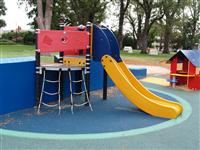 Study Playground Design
Study Playground Design
This course develops a sound understanding of the design and construction of small community parks and playgrounds. This course covers playground philosophy, design of play structures (for function and safety), materials selection, community participation and park design. This course can enhance skills or provide career benefits for:
- Park and playground managers
- Landscape designers, landscape architects
- Engineers, architects, property developers
- Playground designers
- Playground builders, auditors, maintenance staff
- Play leaders
- Child care workers
- School teachers